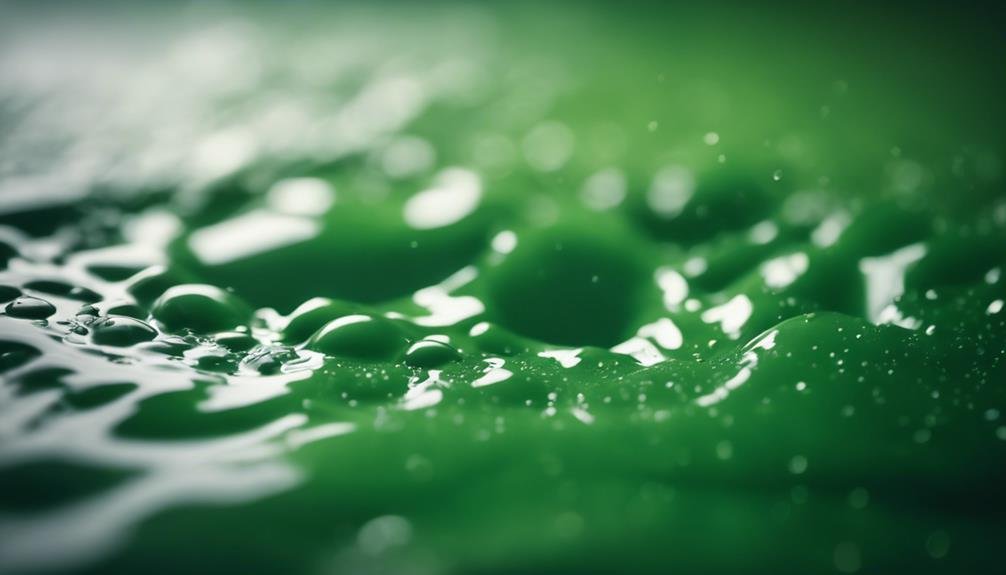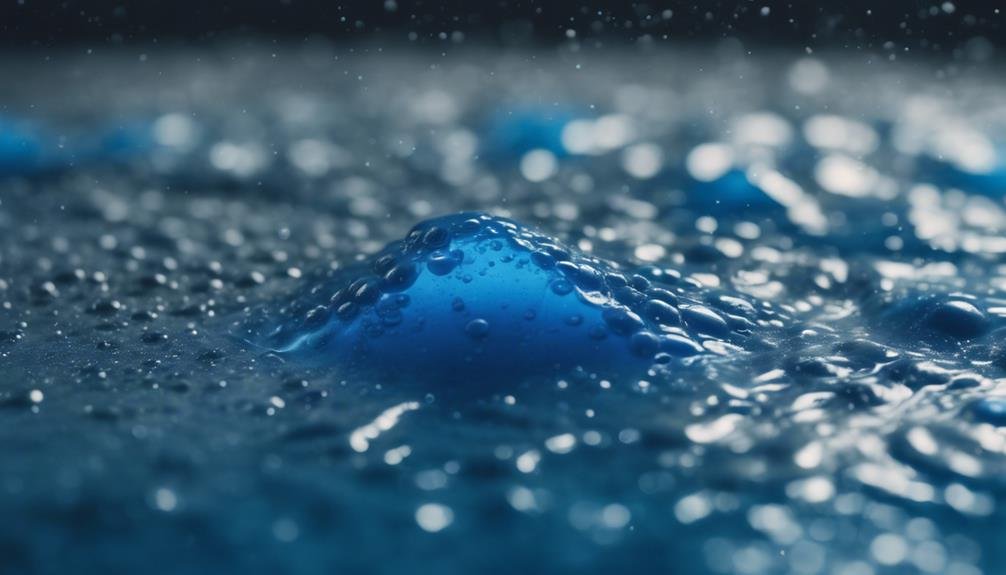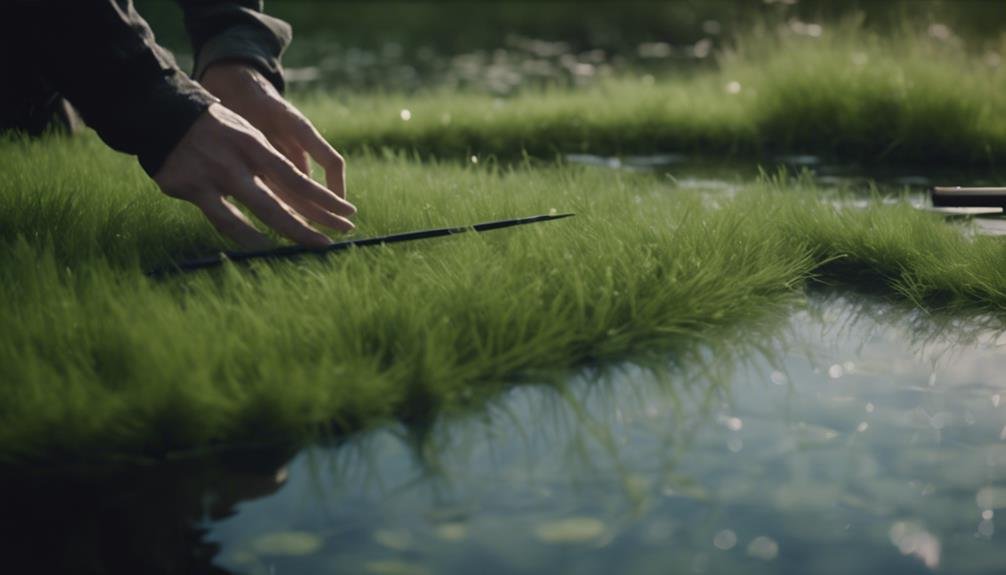Let's begin by finding leaks through visual checks, water flooding, or dye tests designed for this purpose. Once we pinpoint the leaks, we will thoroughly clean the area before fixing them with adhesives and sealants following the manufacturer's instructions.
If the issue lies in faulty seams, we will clean them, roughen the surface, and apply seam sealants in multiple layers for a secure fix. In cases of severe leaks, a complete re-lining of the pond with a new liner and underlay fabric may be necessary.
To prevent future leaks, regular inspections, compatibility checks with materials, and proper anchoring methods are key. By following these steps diligently, you can ensure a leak-free pond for years to come.
Leak Detection Methods
When dealing with a leaky pond liner, it's crucial to first locate the exact source of the leak using reliable detection methods. One effective technique is the 'bucket test.' This involves filling a large bucket with water, sealing its bottom, and submerging it over different parts of the liner. If no water escapes after a few hours, that area is secure. Repeat this process until the leak is pinpointed.
Another approach is to drain the pond and carefully examine the exposed liner for any signs of damage like holes, cracks, or punctures, especially near rocks or roots that may have caused wear. Marking these damaged areas will help with the repair process.
For larger ponds, a leak detection dye can be used. By adding the dye to the water, we can look for concentrated streams of colored water seeping out, indicating the location of the leaks. Some dyes even glow under UV light, making nighttime detection easier.
Precisely identifying the leaks allows us to concentrate our repair efforts, saving time and avoiding unnecessary replacement of the entire liner. Accurate detection is essential before proceeding with any repairs.
Liner Inspection Techniques
When checking pond liners for leaks, we'll carefully look over the surface for any signs of damage such as tears, punctures, or cracks.
In addition to a visual inspection, we'll use specialized tools to probe the liner for subtle defects or weak points that could potentially cause leaks in the future.
Visual Inspection Checklist
When inspecting a pond liner for leaks, it's crucial to conduct a thorough visual examination by carefully examining the entire surface. Start by walking around the perimeter to check for tears, cracks, or separations from the pond walls.
Then, inspect the main surface for any holes, punctures, or signs of abrasion. Look out for any objects sticking out that could have caused damage, such as rocks, roots, or debris.
Pay special attention to areas where water inlets or outlets are located, as these are common leak spots. Check for wrinkles, folds, or overlapping sections on the liner, as these areas are prone to tearing.
Keep an eye out for any discoloration or staining on the liner, as this may indicate a slow leak or a chemical reaction. By following this detailed visual checklist, you can pinpoint potential issues and take the necessary steps to repair or replace the liner as needed to maintain the pond's water-tightness and functionality.
Probing With Tools
When visually inspecting a pond liner for leaks, it's important to follow up with a more thorough approach using probing tools. By utilizing tools such as a metal probe or screwdriver to gently prod the liner, you can identify soft or spongy areas that may indicate potential tears or holes. Additionally, using a stiff brush or broom to sweep over the liner's surface can help reveal any bumps or raised areas that could signal a leak. For pinpointing even the smallest openings in the liner, consider using a leak detection solution or dye test kit.
It's crucial to systematically probe the entire liner, focusing on corners, edges, and areas around structures where damage is more likely. Any suspect areas should be marked for further inspection or patching. This probing technique allows for a comprehensive inspection that can uncover issues not visible to the naked eye.
Locating Leak Sources

Detecting leaks in pond liners can be a tricky task, but there are effective methods available. To start, carefully inspect the liner for visible signs of damage like holes, tears, or worn areas. Make sure to check the entire surface, including edges and areas around water features.
Another method is to flood the area with water and observe for any seepage through the liner. Either fill the pond to its normal level or use a sprinkler system to saturate specific sections. The leaking water will indicate the location of the leak.
For more challenging leaks, consider using dye testing. Adding a specialized dye to the pond water will create a colored trail where the water is escaping, making it easier to pinpoint the leak source. This is especially helpful for smaller or underground leaks that are hard to spot visually.
If needed, professional leak detection services can be hired. They have advanced equipment like moisture meters or infrared cameras that can accurately locate even the most stubborn leaks. Their expertise and tools can save time and effort in the long run.
Patching Liner Holes
After identifying the leak in the pond liner, the next step is to patch the hole to prevent further water loss. Here's how we'll do it:
First, we'll thoroughly clean the area around the hole to remove any debris or algae.
Then, we'll cut a patch from a spare piece of pond liner that's at least 6 inches larger than the hole on all sides. To ensure a strong bond, we'll rough up the surface around the hole with sandpaper.
Next, we'll apply pond liner adhesive or sealant generously to both the hole area and the underside of the patch. Carefully placing the patch over the hole, we'll smooth it out to eliminate any air bubbles or wrinkles.
To secure the patch in place, we'll weigh it down with a heavy object for a minimum of 24 hours. It's important to allow the adhesive to fully cure before refilling the pond.
Following the manufacturer's instructions for the specific adhesive or sealant is crucial for a successful repair. With proper preparation and application, patching the hole effectively will prevent future leaks and prolong the lifespan of your pond liner.
Sealing Liner Seams

When it comes to preventing leaks in pond liners, one common issue is faulty seams. Seams are where different sections of the liner overlap and are joined together. Over time, these connections can weaken, leading to water escaping from the pond. To fix this, it's crucial to use a specialized seam sealant made for pond liners.
To start, make sure the seam area is clean by removing any dirt, algae, or debris. Then, roughen the surface with a wire brush or sandpaper to help the sealant stick better. Once the surface is prepped, apply the seam sealant following the instructions provided by the manufacturer regarding thickness and drying times.
Ensure that the sealant is spread evenly along the entire length of the seam to avoid any gaps or missed spots that could cause future leaks. It may be necessary to apply multiple coats for a secure seal, allowing each coat to dry properly in between.
Although sealing seams requires attention to detail, it's a crucial step in maintaining a leak-free pond liner. By taking the time to properly reseal faulty seams, you can prevent water loss and avoid costly repairs in the future.
Relining Severe Leaks
When severe leaks in a pond can't be patched, relining the entire pond becomes necessary. This process involves draining the pond, removing the old liner, and preparing the pond bed for the new liner.
First, the bare pond floor is inspected for any sharp objects like roots, rocks, or debris that could damage the new liner. The surface is then leveled and compacted to create a smooth and stable base. An underlay fabric is laid down to cushion and protect the new liner.
Once the groundwork is set, the new liner material is installed with attention to detail. Seams are overlapped as recommended by the manufacturer, and edges are secured with liner stakes or backfill. The pond is filled slowly to allow the liner to settle without any creases or folds.
While relining a pond is labor-intensive, it's crucial when patching isn't an option. Proper preparation of the pond bed and careful handling of the new liner are key to establishing a durable and watertight seal that will last for years.
Preventive Maintenance Tips

To ensure the durability of our pond liners for the long term, it's crucial to follow some key preventive maintenance tips.
Firstly, it's important to set up a regular inspection routine to catch any potential issues early.
Secondly, considering the compatibility of the liner material with the pond's specific environment, including factors like water chemistry and exposure to UV rays, is essential for its longevity.
Lastly, employing proper anchoring techniques for the liner can help prevent any shifting or displacement, reducing the chances of leaks or damage.
Inspection Schedule
Regular inspections are essential to maintaining the longevity of our pond liner. It's crucial to examine the liner thoroughly at key times throughout the year. These include early spring, after the ice has melted but before refilling the pond, mid-summer when vegetation and algae growth are at their peak, and late fall before freezing temperatures set in.
Adhering to this inspection schedule allows us to promptly identify any issues that may arise and address them before they escalate. During each inspection, we'll carefully check the entire surface of the liner for cracks, tears, uplifted or loose edges, and any signs of premature wear or deterioration. Additionally, we'll inspect the pond edges, underlay, and surrounding landscape for anything that could potentially cause damage to the liner.
Material Compatibility
Another crucial aspect of preventive maintenance is ensuring that our pond liner is compatible with all materials it comes into contact with. It's important to understand the composition of our liner and avoid exposing it to any chemicals, fertilizers, or substances that could potentially harm or weaken it over time.
Furthermore, we should be cautious of sharp objects or tools that could puncture or tear the liner during regular maintenance or landscaping activities near the pond. Using protective mats or boards to cover exposed areas when heavy equipment is near the pond's edge is a wise precaution.
Certain aquatic plants with aggressive root systems have the potential to damage the liner, so it's essential to monitor and manage their growth within the pond.
Seeking advice from a knowledgeable professional can help us identify any compatibility issues and implement necessary preventive measures to safeguard our investment in the pond liner.
Liner Anchoring
Properly anchoring the pond liner is essential for preventing leaks and ensuring its long-term durability. It's crucial to regularly inspect and secure the edges of the liner to maintain its integrity.
Here are some key points to consider:
- Use heavy-duty landscape edging or bricks to secure the liner's edges and prevent shifting or uplift.
- Backfill the trench around the liner with soil, compacting it firmly to provide a stable anchor.
- In windy areas or on slopes, use galvanized stakes or pins to firmly anchor the liner in place.
Over time, the soil can settle, vegetation may grow, and water movement can loosen the liner's anchoring. Regular inspections are necessary to identify any issues and make adjustments as needed.
Trim back any plants encroaching on the liner's edges to prevent damage. Proper anchoring not only prevents leaks but also prolongs the liner's lifespan by reducing stress from environmental factors.
Conclusion
Ensuring the longevity of our pond liners is crucial for preserving the beauty and functionality of our water features. By following the suggested methods and taking preventive measures, we can effectively prevent leaks and maintain our ponds in pristine condition.
Conducting regular inspections and promptly addressing any issues will help prolong the lifespan of our liners, allowing us to savor our outdoor sanctuaries for many years to come. Remember, a well-maintained pond liner is the key to enjoying a tranquil and picturesque oasis right in our own backyard.

